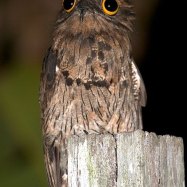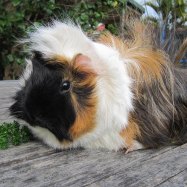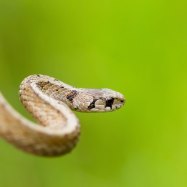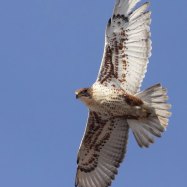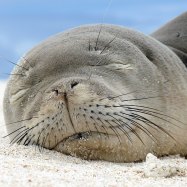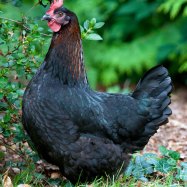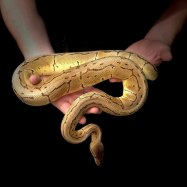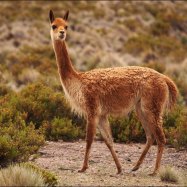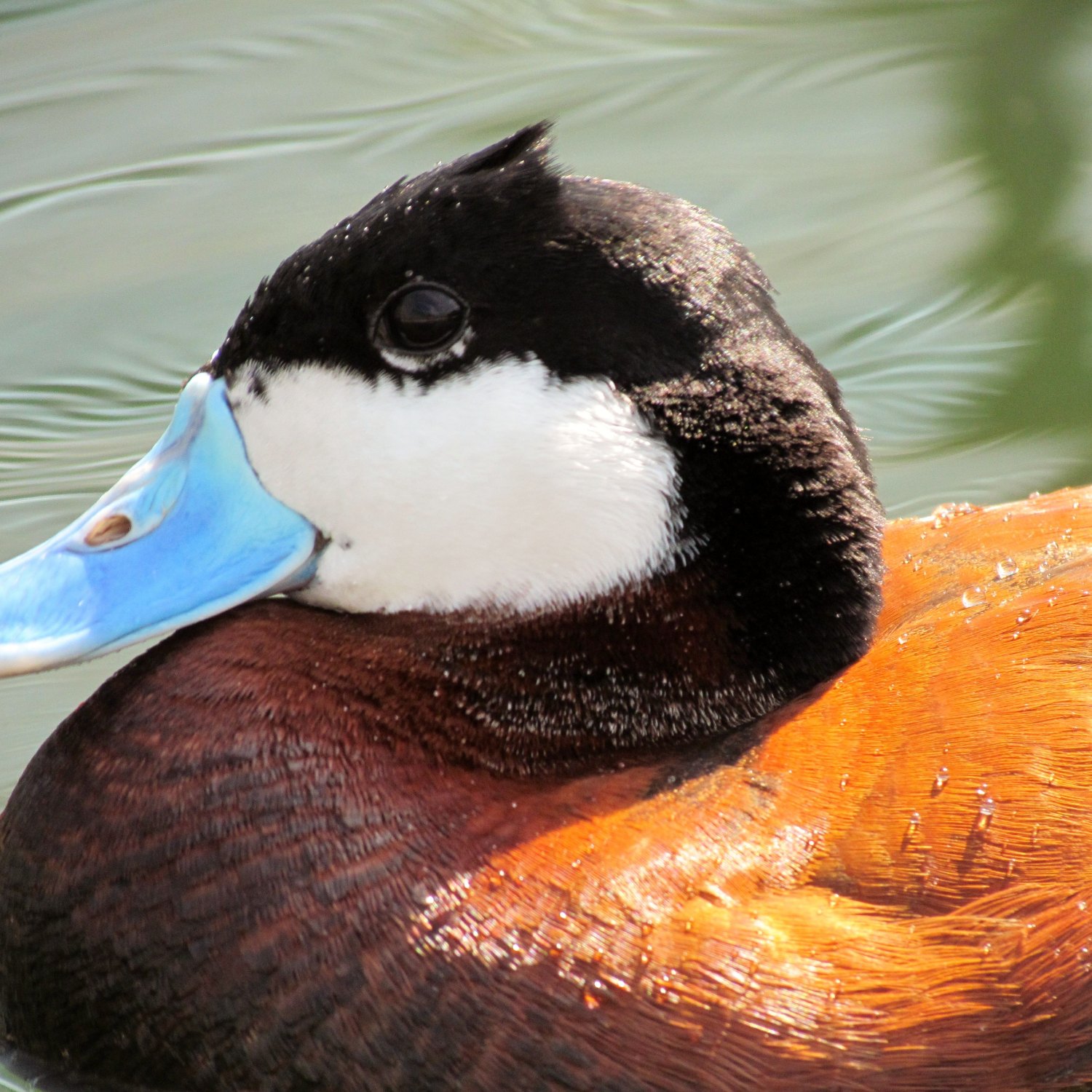
Ruddy Duck
14 to 18 inches (35 to 46 cm)
The Ruddy Duck, found in the United States, is a small yet compact waterfowl with a distinctive large head and short, thick neck. Growing up to 14-18 inches in length, this member of the Anatidae family is a unique addition to any birdwatcher's list. So keep an eye out for this colorful creature on your next nature walk! #RuddyDuck #Waterfowl #Birdwatching
Animal Details Summary:
Common Name: Ruddy Duck
Kingdom: Animalia
Habitat: Lakes, ponds, marshes, and coastal bays
The Ruddy Duck: A small yet mighty waterfowl
Nature has a way of creating some truly fascinating creatures, each with its own unique characteristics and quirks. The Ruddy Duck, scientifically known as Oxyura jamaicensis, is no exception. This small but mighty waterfowl is native to North and South America and is commonly found in lakes, ponds, marshes, and coastal bays. With its striking appearance and interesting behaviors, the Ruddy Duck is a bird that captures the attention and curiosity of many Ruddy Duck.Meet the Ruddy Duck
Before diving into the fascinating features of this bird, let's first get to know the Ruddy Duck a little better. As mentioned, its scientific name is Oxyura jamaicensis, and it is a member of the animal kingdom, phylum Chordata, and class Aves. Its evolutionary journey has placed it in the order Anseriformes and family Anatidae, making it a distant relative of ducks, swans, and geese.The Ruddy Duck is a small waterbird, with males measuring around 14 to 18 inches (35 to 46 cm) in length. It has a compact body shape, with a large head and a short, thick neck. Its body is covered in a rich chestnut color, with a bright blue bill, white cheeks, and a black cap. On the other hand, females have a brown and mottled appearance, with a lighter face and a dark bill. Despite their differences in coloration, both males and females have the distinctive white cheek patches.
Habitat and Range
The Ruddy Duck is a highly adaptable and widespread species, found throughout North and South America Red Footed Tortoise. It is primarily found in wetland habitats such as lakes, ponds, marshes, and coastal bays. These birds prefer shallow waters, as they are diving and surface feeders. They also prefer areas with dense aquatic vegetation, providing them with ample cover and food sources.While Ruddy Ducks can be found in both North and South America, they are more abundant in North America. In fact, they are considered a year-round resident in the United States, particularly in the western and central regions.
Feeding Habits
As mentioned earlier, Ruddy Ducks are diving and surface feeders, which means they forage for food both underwater and on the surface of the water. They feed on a variety of aquatic plants, insects, mollusks, and small fish. In order to dive for food, Ruddy Ducks use their wings to propel them underwater. This technique is known as "flying underwater" and is a unique behavior observed only in a few duck species.Ruddy Ducks also exhibit a process called gut fermentation, where microorganisms help them digest fibrous plant material. This allows them to consume a wide variety of vegetation, making them adaptable to changing food sources in their habitat.
Country of Origin and Distribution
While Ruddy Ducks are commonly found in North and South America, they are native to North America and can be found year-round in the United States. They are also found in Canada, Mexico, and Central America, making them a highly widespread species. Ruddy Ducks are also introduced to some countries throughout Europe, where they are now considered an invasive species.A Unique Behavioral Trait
One of the most interesting features of Ruddy Ducks is their unique courtship display. During the breeding season, males will engage in a "water dance" where they use their bills to splash water and create small waves. They also inflate their neck feathers, creating a distinctive ruffle around their necks. All of this is done to attract females and establish dominance among other males.While this display may seem like a simple dance, it is actually quite complex and can last for up to an hour. Once the male has impressed a female, they will pair up and begin the breeding process.
Conservation Status
Unfortunately, Ruddy Ducks are facing several threats to their populations. The destruction and degradation of their wetland habitats, primarily due to human activities, have greatly impacted their numbers. In addition, they are also facing competition from non-native species such as the Common Myna and the Red-eared Slider turtle. These factors have led to a decline in their numbers in certain areas.However, in response to these threats, conservation efforts are being made in various parts of their range. In the United States, the Migratory Bird Treaty Act has been put in place to protect various bird species, including the Ruddy Duck. In addition, wetland restoration and management projects are being implemented throughout their range to maintain and enhance their habitats.
The Ruddy Duck and Human Interaction
Compared to other waterfowl species, Ruddy Ducks are not actively hunted for food or sport. However, they are occasionally hunted for their feathers or by accident in waterfowl hunts. The Ruddy Duck has also been introduced to some countries for hunting purposes, but this has resulted in negative impacts on their native habitats.On a more positive note, Ruddy Ducks have become popular among birdwatchers and bird photographers due to their striking appearance and interesting behaviors. They have also been featured on postage stamps and coins in various countries, showcasing their cultural significance.
The Role of Natural Language Processing
Natural Language Processing (NLP) is a field of artificial intelligence that deals with the interaction between computers and human languages. By analyzing and understanding human language, NLP can assist in improving various aspects of our lives, from automating tasks to enhancing language translation and communication.In the case of the Ruddy Duck, NLP can play a crucial role in helping us monitor and understand their populations and behaviors. By analyzing data from bird sightings, migration patterns, and habitat changes, NLP can provide valuable insights on the health and distribution of this species. This information can then aid conservation efforts and improve our understanding of this fascinating bird.
In Conclusion
The Ruddy Duck may be small in size, but it is undoubtedly mighty in its unique characteristics and behaviors. From its striking appearance to its interesting feeding and courtship habits, it is a bird that captivates the attention of birdwatchers and nature enthusiasts.However, this remarkable species also faces various threats, highlighting the need for conservation efforts and the role of NLP in aiding these efforts. By understanding and protecting the Ruddy Duck and its habitat, we can ensure that this small yet mighty waterfowl continues to grace our wetlands for generations to come.

Ruddy Duck
Animal Details Ruddy Duck - Scientific Name: Oxyura jamaicensis
- Category: Animals R
- Scientific Name: Oxyura jamaicensis
- Common Name: Ruddy Duck
- Kingdom: Animalia
- Phylum: Chordata
- Class: Aves
- Order: Anseriformes
- Family: Anatidae
- Habitat: Lakes, ponds, marshes, and coastal bays
- Feeding Method: Diving and surface feeding
- Geographical Distribution: North and South America
- Country of Origin: North America
- Location: United States
- Animal Coloration: Male: rich chestnut body with a bright blue bill, white cheeks, and black cap. Female: brown with a lighter face and a dark bill.
- Body Shape: Small and compact with a large head and a short, thick neck.
- Length: 14 to 18 inches (35 to 46 cm)
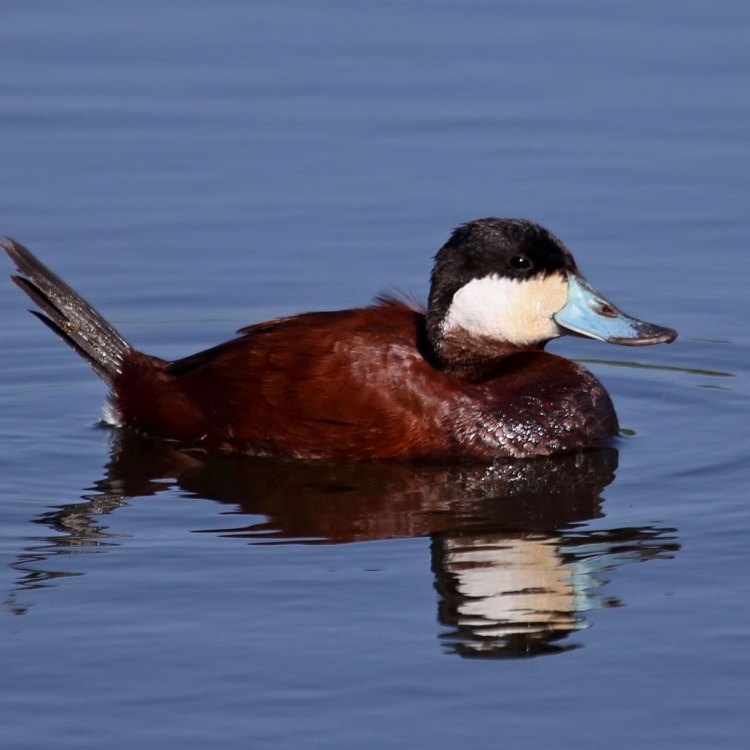
Ruddy Duck
- Adult Size: Small to medium-sized
- Average Lifespan: 2 to 5 years
- Reproduction: Sexual
- Reproductive Behavior: Monogamous
- Sound or Call: Males make a series of grunting and growling calls
- Migration Pattern: Migratory
- Social Groups: Largely solitary
- Behavior: Aggressive during breeding season and territorial
- Threats: Habitat loss, pollution, and hunting
- Conservation Status: Least Concern
- Impact on Ecosystem: Important for maintaining aquatic vegetation
- Human Use: Hunting and birdwatching
- Distinctive Features: Bright blue bill and chestnut body plumage in males
- Interesting Facts: Ruddy Ducks are known for their stiff upright tails and unique courtship displays.
- Predator: Large birds of prey, such as hawks and eagles
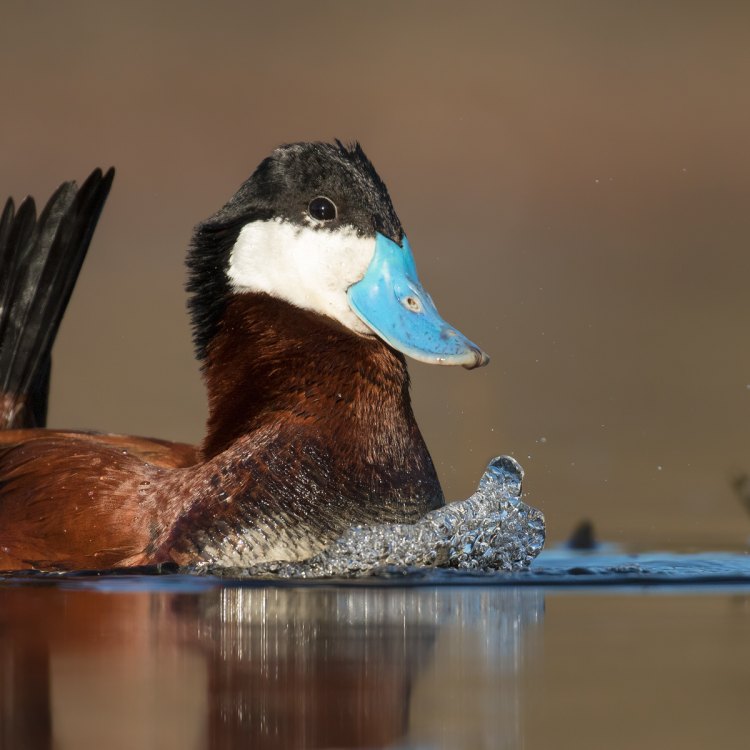
Oxyura jamaicensis
Ruddy Ducks: A Small but Mighty Bird with Unique Characteristics
The Ruddy Duck, scientifically known as Oxyura jamaicensis, is a small to medium-sized waterbird that can be found in North and South America, as well as parts of Europe and northern Africa. While it may seem like an unassuming bird, the Ruddy Duck has many unique features and behaviors that make it stand out in the avian world. From its distinctive appearance to its important role in the ecosystem, this tiny bird has a lot to offer. So, let's take a closer look at the fascinating world of the Ruddy Duck PeaceOfAnimals.Com.The Basics: Size, Lifespan, and Reproduction
As mentioned, the Ruddy Duck is a small to medium-sized bird, with an average length of 13-15 inches and a wingspan of 19-22 inches. On average, they weigh between 1-2 pounds, making them one of the smallest duck species. Despite their small size, Ruddy Ducks have an impressive lifespan of 2 to 5 years in the wild, with some individuals living up to 10 years in captivity.When it comes to reproduction, Ruddy Ducks are like most birds in that they reproduce sexually. However, what sets them apart is their monogamous reproductive behavior. This means that once they find a mate, they will stay together for the entire breeding season, which usually occurs from April to August.
Call of the Wild: Ruddy Duck's Unique Mating Calls
Males of the species are known for their distinct calls during the breeding season. It is not uncommon to hear a series of grunting and growling coming from the male Ruddy Ducks as they try to attract a mate. This vocal display, along with their bright colors, is essential in courtship and establishing dominance among other males Russian Blue.Migratory Habits: Where and When Ruddy Ducks Travel
Ruddy Ducks are migratory birds, meaning they travel to different locations depending on the time of year. In North America, they breed in the northern regions of the United States and Canada, and then migrate to the southern United States and Mexico for the winter. In Europe, they can be found in the UK and parts of western Europe for breeding, and then travel to the Mediterranean and northern Africa for the colder months.Solitary Creatures: Ruddy Ducks' Social Groups and Behavior
Unlike other duck species, Ruddy Ducks are largely solitary birds. They are known to be aggressive during breeding season and territorial, especially when it comes to protecting their mates and nesting sites. However, outside of the breeding season, they can be found foraging and resting alone or in small groups of up to 4-6 individuals.Conservation Status: Least Concern, but Threatened by Human Activities
According to the International Union for Conservation of Nature (IUCN), the Ruddy Duck is listed as Least Concern, meaning that the species is not at immediate risk of extinction. However, that does not mean they are not facing threats. The main threats to Ruddy Ducks include habitat loss, pollution, and hunting.The loss of wetlands and marshes, which serve as their main breeding grounds, has had a significant impact on their population. Man-made pollution, such as oil spills and chemical runoff, has also affected their health and reproductive success. And while hunting of Ruddy Ducks is regulated and managed in most countries, it is still a prevalent activity in some regions.
Importance in the Ecosystem: Ruddy Ducks as Ecosystem Engineers
Despite their small size, Ruddy Ducks play a crucial role in the ecosystem. As herbivores, they mainly feed on aquatic plants and invertebrates, especially during breeding season when they need the extra nutrition for egg production and raising their young. This diet helps maintain and control the growth of aquatic vegetation, making them significant ecosystem engineers.Ruddy Ducks and Humans: A Complex Relationship
The relationship between Ruddy Ducks and humans is a complex one. On the one hand, they are hunted for sport and food. In some countries, such as Spain, they are considered a delicacy and are hunted regularly. In other regions, such as the United States, hunting Ruddy Ducks is regulated and managed by hunting seasons and bag limits.On the other hand, Ruddy Ducks are also a popular bird for birdwatchers. With their striking colors and unique behaviors, they are a favorite among birding enthusiasts. However, like with any wild animal, it is essential to observe and admire them from a safe distance and not disturb them in their natural habitat.
Distinctive Appearance: What Makes Ruddy Ducks Stand Out?
One of the most striking features of the Ruddy Duck is the bright blue bill and chestnut body plumage of the males, contrasting with their white cheeks and black cap. In contrast, female Ruddy Ducks have a gray-brown plumage, with a contrasting white chin and pale cheeks. Another distinctive characteristic of the Ruddy Duck is its stiff, upright tail, which has earned them the nickname "stiff-tail ducks."Fascinating Courtship Displays: Ruddy Ducks' Unique Behaviors
Ruddy Ducks are not only known for their unique calls and appearance but also for their fascinating courtship displays. During breeding season, males will perform an elaborate courtship display, known as "pumping." This display involves the male rapidly bobbing his head up and down while flapping his wings and splashing water. The more impressive the display, the more likely the female is to choose him as her mate.Predators of the Ruddy Duck
Like many other bird species, Ruddy Ducks have their fair share of predators. Large birds of prey, such as hawks and eagles, are among the top predators of Ruddy Ducks. They also face threats from predators on the ground, such as coyotes, foxes, and raccoons, who may prey on their nests and young.In Conclusion
In the world of birds, the Ruddy Duck may seem like a small and unassuming species. But, as we have learned, they are a remarkable bird with unique characteristics and behaviors. From their distinctive appearance to their important role in the ecosystem, the Ruddy Duck holds its own in the avian world. As with any other wild animal, it is crucial to respect and protect Ruddy Ducks to ensure their survival for generations to come.
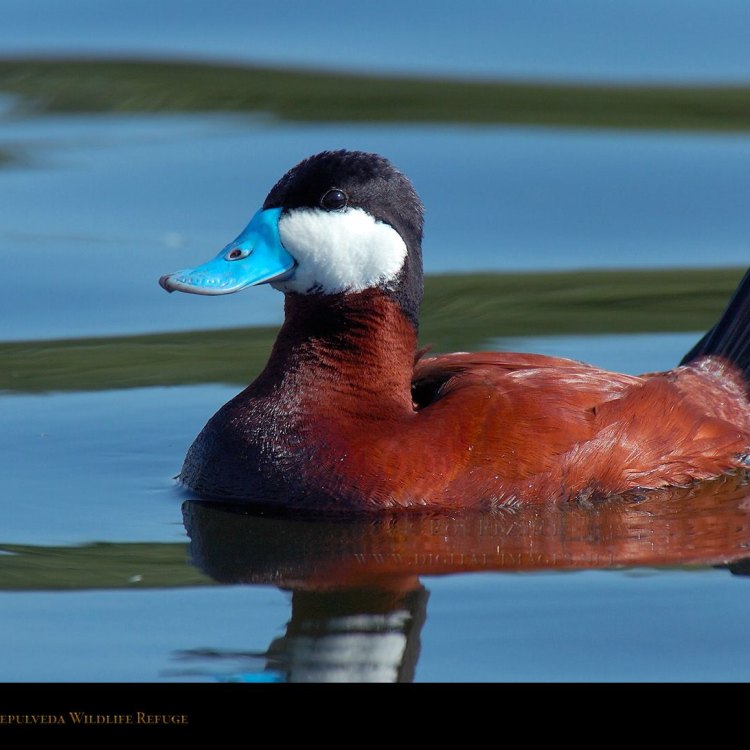
The Ruddy Duck: A small yet mighty waterfowl
Disclaimer: The content provided is for informational purposes only. We cannot guarantee the accuracy of the information on this page 100%. All information provided here may change without prior notice.

